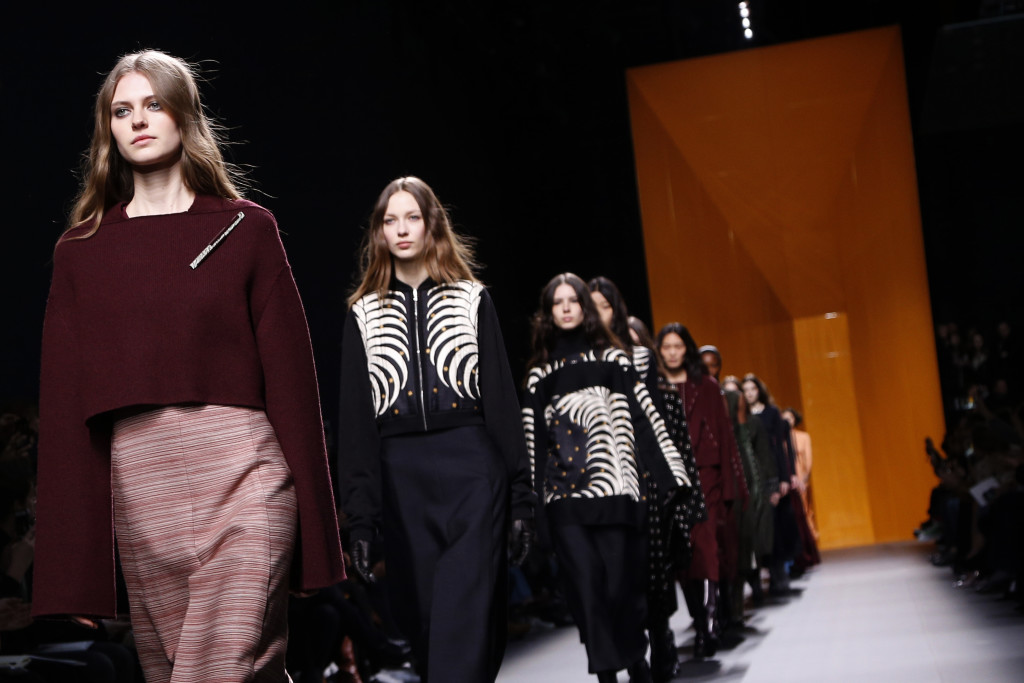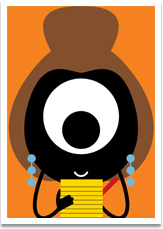I HAVE WRITTEN not one word about the results of the enquiry by the Council of Fashion Designers of America (CFDA) into the future of fashion shows. And I have not yet reviewed the Hermès show, which took place on Tuesday, 8th March.
There is a reason why I feel that these two stories are intertwined. The Boston Consulting Group, commissioned by the CFDA to study the timing of shows vis-à-vis the delivery of the collections and their exposure to the public, came to the unsurprising conclusion that time was ripe for change, yet that each brand had to make a particular decision.
The study perceived the key challenges in the current system to be “early” deliveries and mark-downs hitting full-price sales; a decreasing perception of “newness”; and the danger that designers may have creative burn-out.
Now does all this sound like Hermès, for whom the very word “newness” must be anathema, since its vision is to build a future from its past? Has anyone, anytime, even back in the days when the company was primarily a saddle maker, ever thought that this work of exceptional craftsmanship should be speeded up, marked down, or trending online because someone famous was sitting in the saddle?
It is important to divide the different characteristics of the companies with on-stage razzmatazz and speedy online positioning, while other brands are showing quietly, almost behind closed doors. Both H&M and Hermès were on the Paris calendar, but they have zero in common, except the first letter of their names.
The problem for any luxury company that offers more than marketing skills is that the Internet is such a poor way to convey the depth of quality of their products, or the emotional response to a tactile piece of clothing.
I smiled when I saw the Boston Consulting coverage of “in-season relevancy”. Yes, I appreciate that people might want to buy a winter coat in November and summer clothes in May. But they might also live in an area where there is no cold winter; or be in Australia, where the climate is directly opposed to the traditional Western calendar. Globalisation has raised issues that are particular to fashion.
Where Hermès could be relevant to the discussion is in the concept that new clothes might be bought each season – but to use alongside an existing wardrobe, not to replace it. This was, after all, the way people dressed for centuries, and the concept sounds more appealing than the Boston Consulting description of “bi-annual, in-season, consumer-relevant activations”.
The Hermès show was held in the room where the French cavalry – La Garde républicaine – do their training. Lined with fresh, raw wood, with giant ceiling screens to reflect the crowd and the models, I saw the work of Creative Director Nadège Vanhee-Cybulski, who seems to have slipped neatly into her role. She took a calf-length as her point of reference for shape, but used bias cuts to make dresses or skirts flow over the body.
Modernising shape and cut is imperative for fashion relevance, but at the same time it is essential for the audience to understand the quality of the materials, especially the leather, suede and cashmere. Hermès provides a book giving fabric details and these entries explain so much about quality and craftsmanship. To look at, it’s a burgundy-coloured top worn loosely over a mid-calf skirt. The Hermès description is “silk jockey-style sweatshirt, inlaid with lamb skin leather on double-faced cashmere”.
After the show, Nadège spoke about “introducing new shades of colours” and being “very obsessive with length for this elongated silhouette”. She was referring to making the traditional Hermès orange more golden for mid-calf dresses, with matching ankle socks filling in the flesh gap; and also of mixing pastel shades that moved from dawn pink to the palest aquamarine.
It has always been difficult for Hermès designers to handle those famous scarf prints, but after a parade of quiet glamour with elongated knits, she jumped the print hurdle with an abstraction of the Palme Royale Hermès pattern inserted into knit.
“I really wanted to change the perception of riding and bring a fresh eye to it – so you have some jockey jackets, but everything has been sent out mixed together,” said Nadège. “I wanted to give a new translation of ‘now’.”
And there you have it: relevant classics. Nadège achieved her goal for Hermès. And let’s hope that her approach will be a counter-balance to fast fashion and its relentless marketing.


